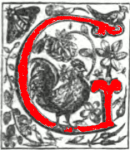
eorge Heming [Hemming] Mason was born at Fenton Park in Stoke-on-Trent, Staffordshire on 11 March 1818, the eldest son of George Miles Mason M.A., a Staffordshire potter, and his wife Eliza Heming. In 1829 his father retired from the family pottery business and in 1832 the family moved to Wetley Abbey, a Gothic Revival mansion situated near Wetley Rocks in Staffordshire. George was educated at King Edward's School, Birmingham. George's father initially refused his request to become an artist and from 1834 he trained to be a surgeon in Birmingham under William Royden Watts. In 1844 he finally abandoned medicine to pursue his dream to become a painter.

Portrait of Mason by Valentine Cameron Prinsep,
in the early 1860s.
In the autumn of 1843 he left on a trip to Europe with his brother Miles and visited France, Switzerland, and Italy. They reached Rome in the autumn of 1845 where George took a studio. He was entirely self-taught as an artist having never received any formal training. After the family finances in the pottery industry collapsed in 1848, Mason's father was unable to continue sending him an allowance and he was forced to make a living from his art. When the Italian War for independence broke out in 1848 his brother joined Garibaldi's army while George with his medical training tended to the wounded patriots of the Risorgimento. In the winter of 1852/53 he met three men who became his life-long friends, the painters Frederic Leighton and Giovanni Costa, and the architect George Aitchison. Both the painters had a marked influence on the future direction of his art, particularly Costa, who stressed the importance of sketching from nature.
In 1855 Mason visited the Paris Exposition Universelle with George Aitchison where he encountered the work of Jules Breton. In 1857 Mason exhibited his first work at the Royal Academy. In 1858 he returned to England to marry his cousin Mary Emma Wood. They settled at the old family home Wetley Abbey which George had inherited after the death of his father in 1859. Mary was to give birth to seven children of which five survived. Initially family responsibilities and financial insecurities left Mason unable to paint until a visit from Costa in 1863 helped cure his depression.
Leighton and Costa were instrumental to Mason developing his English style. In 1863 Mason went to Paris with Costa, where he became acquainted with the work of the Barbizon school painters, who were to also influence his later work. In 1864 Mason moved to Westbourne House, Shaftesbury Road, Hammersmith in London, although he still spent much time at Wetley. In 1868 Mason exhibited one of his most important paintings Evening Hymn at the Royal Academy, which led to his being elected as an Associate of the Royal Academy in January 1869. He also exhibited in other venues such as the Dudley Gallery.
In 1869 he moved to 7 Theresa Terrace, Hammersmith. His later work painting idyllic pastoral landscapes justifies including him as one of the leaders of the Idyllist school. He is also often associated with the Etruscan School because of his close friendship with Costa. Mason died at his home in London at age fifty-four on October 22, 1872 following an anginal attack and after a long period of poor health due to heart disease. He was buried at Brompton Cemetery. A memorial exhibition of his work was held at the Burlington Fine Arts Club in 1873.
Bibliography
Billingham, Rosalind: George Heming Mason. Exhibition catalogue, Stoke-on-Trent Museum and Gallery, 1982
Esposito, Donato. "George Heming Mason." Frederick Walker and the Idyllists. London: Lund Humphries, 2017, Chapter VII, 159-80.
White, John Forbes. "The Pictures of the Late George Mason, A.R.A." The Contemporary Review XXI (1873): 724-36.
Created 28 April 2023